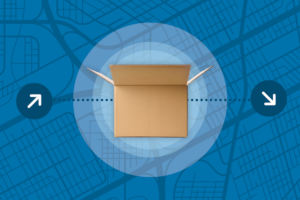The shipping industry is evolving rapidly, and businesses are seeking solutions that balance cost, efficiency, flexibility, and timely delivery. Less than truckload (LTL) shipping addresses these challenges while remaining cost-effective. Less than truckload services allow companies to ship goods without needing a full truck. This enables businesses of all sizes to deliver their products on time while reducing shipping costs.
This blog explores what LTL shipping is, its benefits, challenges, and ways to optimize its use. We’ll also discuss how LTL services impact the economy and environment, along with practical tips for maximizing their advantages.
What Are Less Than Truckload Services?
LTL shipping transports smaller shipments that don’t fill an entire truck. Instead of one shipper using the whole space, multiple businesses share the truck, reducing costs and improving efficiency while minimizing delays.
Key Differences Between Full Truckload and Less Than Truckload Shipping
- Shipment Size: FTL shipping dedicates an entire truck to a single shipment, typically exceeding 15,000 pounds. LTL shipping handles smaller loads ranging from 150 to 15,000 pounds.
- Cost Structure: FTL costs are based on full truck utilization, while LTL splits expenses among multiple shippers, making it more affordable.
- Transit Time: LTL shipping typically involves multiple stops and transfers, which can extend delivery times compared to direct FTL shipments.
Real-Life Applications of LTL Services
Businesses across industries rely on LTL shipping. For example, a small business selling artisanal goods online can ship smaller, frequent loads to distribution centers or directly to customers without incurring the high costs of FTL shipping.
How Does Less Than Truckload Shipping Work?

Freight carriers consolidate shipments from multiple businesses into a single truckload. Each shipment occupies only the necessary space, ensuring efficient truck utilization. Distribution hubs play a key role in organizing routes, sorting shipments, and redistributing goods to their final destinations.
Carriers oversee collection, sorting, and delivery, while distribution hubs streamline logistics by grouping shipments based on destination and urgency. This coordination optimizes routes and helps businesses meet their delivery timelines.
Understanding Freight Classifications
Freight classification differentiates cargo based on volume, density, handling, and liability. This system determines shipping costs by assessing the space required and risks involved. Each shipment is assigned a classification number, typically between 50 and 500, where lower numbers indicate lower costs and easier handling.
Ignoring freight classification can result in unexpected costs or delays. Key factors influencing freight class include:
- Weight: Heavier cargo requires more fuel and handling, increasing costs—especially for complex items like machinery.
- Density: The relationship between weight and space matters. Large but lightweight items may cost more to ship due to the space they occupy. In contrast, compact, heavy items are more cost-efficient.
- Fragility: Fragile shipments, such as glass or electronics, require special packaging and careful handling, leading to higher costs.
Advantages of Less Than Truckload Services for Businesses
1. Cost Efficiency
LTL shipping helps businesses save money by allowing them to pay only for the space they use, rather than an entire truck. This is ideal for companies with smaller, varying shipment sizes that need to manage transportation costs effectively.
2. Environmental Benefits
By consolidating multiple shipments into one truck, LTL reduces the number of vehicles on the road, lowering carbon emissions. The Environmental Defense Fund estimates that improving truck efficiency could reduce CO2 emissions by 20% by 2030. Many businesses are prioritizing sustainability, and LTL shipping is a practical way to contribute to these efforts.
3. Flexibility and Scalability
LTL shipping is highly adaptable, making it ideal for businesses with fluctuating demand or seasonal shipping spikes. Unlike FTL, LTL provides a scalable option that allows businesses to adjust shipment sizes based on their needs.
4. Enhanced Delivery Options
LTL carriers offer various delivery options, including expedited shipping for time-sensitive goods. This is especially valuable for industries like food and pharmaceuticals, where on-time delivery is critical.
5. Improved Inventory Management
Frequent LTL shipments allow businesses to align inventory with demand, reducing excess stock and improving cash flow. This helps companies maintain leaner, more efficient supply chains.
6. Wide Accessibility
LTL carriers operate extensive networks, reaching both urban centers and remote areas. This allows businesses to expand their markets without investing in costly logistics infrastructure.
7. Reduced Risk of Damage
Because LTL shipments are typically well-packaged and handled with care, they face a lower risk of damage compared to larger, bulkier shipments. LTL carriers often implement enhanced packaging and handling procedures to protect goods.
8. Supporting Small Businesses
LTL shipping enables startups and small businesses to access professional logistics without the high costs of FTL. By leveraging shared transport resources, smaller businesses can compete with larger companies on delivery speed and pricing.
Challenges in Less Than Truckload Shipping and Solutions

1. Multiple Stops and Transfers
LTL shipments involve multiple stops, increasing the risk of delays or damage.
Solution: Partner with reliable carriers and invest in proper packaging to protect shipments. Consider specialized packaging for fragile items to reduce risks.
2. Pricing Complexities
LTL pricing depends on freight class, weight, dimensions, distance, and special handling needs.
Solution: Compare quotes from multiple carriers and ensure accurate classification to avoid unexpected fees. Negotiating long-term contracts can also help secure better rates.
3. Limited Tracking and Visibility
Because LTL shipments pass through multiple hubs, tracking can be inconsistent.
Solution: Use carriers with GPS tracking and freight management systems for real-time shipment updates. Online tracking platforms provide transparency and help businesses adjust plans as needed.
4. Delivery Delays
LTL shipping has a higher chance of delays due to multiple stops and transfers.
Solution: Plan shipments in advance and use expedited or guaranteed delivery options for time-sensitive goods. Clear communication with carriers can help prioritize deliveries.
5. Limited Pickup and Delivery Flexibility
LTL shipments follow preset routes, which may not align with a business’s preferred schedule.
Solution: Work with carriers that offer flexible scheduling, including evening or weekend pickups. Hybrid shipping solutions can also provide more control over delivery times.
People Also Ask
What is Less Than Truckload (LTL) shipping?
LTL shipping is the transportation of shipments between 150 and 15,000 pounds, offering a cost-effective alternative to FTL for smaller loads.
How is LTL pricing calculated?
Pricing is based on weight, distance, freight class, and special handling needs. Accurate classification and labeling help avoid extra fees.
What are the best practices for LTL packaging?
Use sturdy boxes, secure items with padding, and label shipments clearly to protect them during transit.
Which industries benefit most from LTL services?
E-commerce, manufacturing, and retail businesses benefit from LTL’s flexibility and cost-efficiency.
How do I choose the right LTL carrier?
Evaluate carriers based on reliability, service areas, and customer reviews to find the best fit for your needs.
Tips for Maximizing Less Than Truckload Services
1. Choose the Right Freight Carrier
- Prioritize reliability and on-time delivery rates.
- Ensure the carrier serves your shipping destinations.
2. Optimize Packaging and Labeling
- Use durable materials and protective padding.
- Clearly label packages for proper handling.
3. Leverage Technology
- Use freight management systems for real-time tracking.
4. Plan Shipments Strategically
- Consolidate smaller shipments when possible to reduce costs.
5. Build Strong Carrier Relationships
- Establish long-term partnerships to secure better rates and priority service.
6. Regularly Review Carrier Performance
- Monitor performance metrics and address issues promptly.
Conclusion
Less than truckload services offer cost-effective, flexible shipping solutions that benefit businesses of all sizes. By understanding LTL shipping and implementing best practices, businesses can optimize their supply chains, reduce costs, and enhance sustainability.



